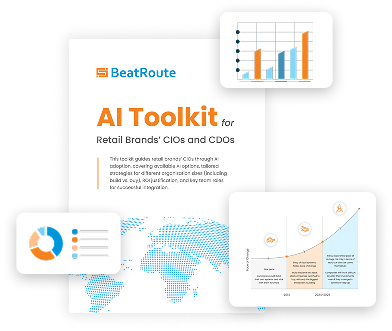How to Run a Successful Sales Force Automation (SFA) Project?

According to a study, Sales Force Automation can lead to a 30% increase in deal closures, an 18% reduction in the sales cycle, and a 14% reduction in sales administration time.
Sales Force Automation or SFA is programming (tool or software) which is used by the sales team to automate its processes. Traditionally it is assumed to only comprise of digitizing tasks like order processing, route optimization, stock monitoring, sales forecast, but if implemented with a long term vision, it can go beyond just data capture and help companies achieve their overall business goals on ground.
If the sales force automation project is successful, it will ultimately put the FMCG/Consumer Goods company on its road to success. The question that most business leaders face is, how to run a successful Sales Force Automation Project?
That’s what we answer below!
Define Your Goals Behind the SFA Project
Defining the business goals behind the project is the first stepping stone for a successful SFA project. Typical business goals of an FMCG company are listed below:
- Streamlining the sales process.
- Increasing sales per outlet.
- Increasing sales per sales rep.
- Increasing sales in some or all territories.
- Better utilization of available manpower and financial resources.
- Increasing sales in general trade, modern trade, etc.
While running the sales force automation project, companies should not just focus on automation or digitization. Instead, they should analyze whether the Sales Force Automation project is helping them to achieve their end business goals or not.
Define What You Want to Achieve Before Going to Features
As a business owner, you must first define your business goals. Once the goals are decided, you can check whether the SFA project is helping to achieve your business goals or not. An SFA project with loads of features but no impact on sales of your FMCG company is of no use.
Instead, an SFA project that looks for optimal features which are helpful in achieving your business goals is much more helpful.
Meeting your business goals is primary…Features are secondary!
Do a Returns on Investment (ROI) Analysis
When you implement an SFA tool, there has to be an analysis of whether the overall SFA project is giving you the desired returns on investment. As a business leader, the returns on investment should be analyzed on the business impact made by the SFA project and not just blindly automating the system.
Business impact refers to the impact on sales of your company, based on the business goals, considering the expected timelines that you have set to achieve those goals. Business leaders must consider how much of an increase in sales or a decrease in expenditure or increase in efficiency will be achieved.
The business impact(returns) should be compared with the investment that you are going to make. This investment may be the basic subscription charges of the SFA tool or any other set up costs spent by the company. The investment also includes the costs of other resources like the IT & admin teams that you will have to deploy to run the project.
Consider Configurability of the Tool
Another important factor for a successful FMCG SFA project is the configurability of the tool, if the SFA tool is easily configurable then the company will not have to burn its resources to change the software on its own. Also, the turnaround time will be quick if the SFA tool is easily configurable.
An SFA tool that needs a lot of customization & coding will require more time to be deployed than an easily configurable tool. Hence more time will be required to fetch the business returns.
Consider the Ease of Use of the Tool
Research shows that only about 50-60% of sales reps use their SFA tool on any given day, which impacts the overall productivity of the FMCG company.
If the SFA tool is easy to use, more of the employees might use all the features of the SFA tool which will increase the overall productivity of the company.
Prioritize Robustness as a Core Requirement
Besides, the SFA tool must have minimum bugs and errors while using. Common usability problems like network crash or app failure must be close to negligible. A user-friendly interface with easy to use controls helps in increasing the adaptability of the tool and hence increases the overall productivity of the FMCG company.
Consider Google Play Store Reviews of the App
In today’s day and age, every 360-degree analysis of the digital product is available online. Make wise use of it! Check on how the sales executives of other FMCG companies have rated and reviewed it on the Google play store. This will give you a fair idea of the usability of the Sales Force Automation tools you want to implement in your business.
If the SFA project is just for the sake of automation and not helping you achieve your business goals then your company is not running a successful project. There is no use of an SFA tool which does not provide you the right returns.
In this competitive world, the difference between a successful FMCG company and the ordinary ones is very minute, and deciding the right Sales Force Automation tool plays an important role in the overall success of your FMCG company.
BeatRoute is industry’s first & only Goal Driven CRM SFA platform, i.e. the platform puts your business goals first, and then ensures that those goals are achieved on ground month after month. It perfectly aligns with the business goals of your company and enables your business growth.
BeatRoute’s Sales Force Automation software is easily configurable without any coding requirements and can fetch you the best returns on investment. It is user friendly and is available for Android and iOS mobile platforms.
About the Author
-
Nikhil is a marketing professional with a passion for enterprise SaaS and the role that technology can play in helping businesses succeed. He is passionate about enabling digital transformation for retail brands, and explores how brands can enhance their sales execution and distributor engagement with the help of technology.
Use Goal-Driven AI to Achieve Retail Sales Uplift, Today!
Join enterprises in 20+ countries that trust BeatRoute, the globally dominant AI platform for sales force automation, field sales, DMS, and eB2B
Latest Insights & Articles
Here are the most impactful articles, platform updates, ebooks and reports for you.



